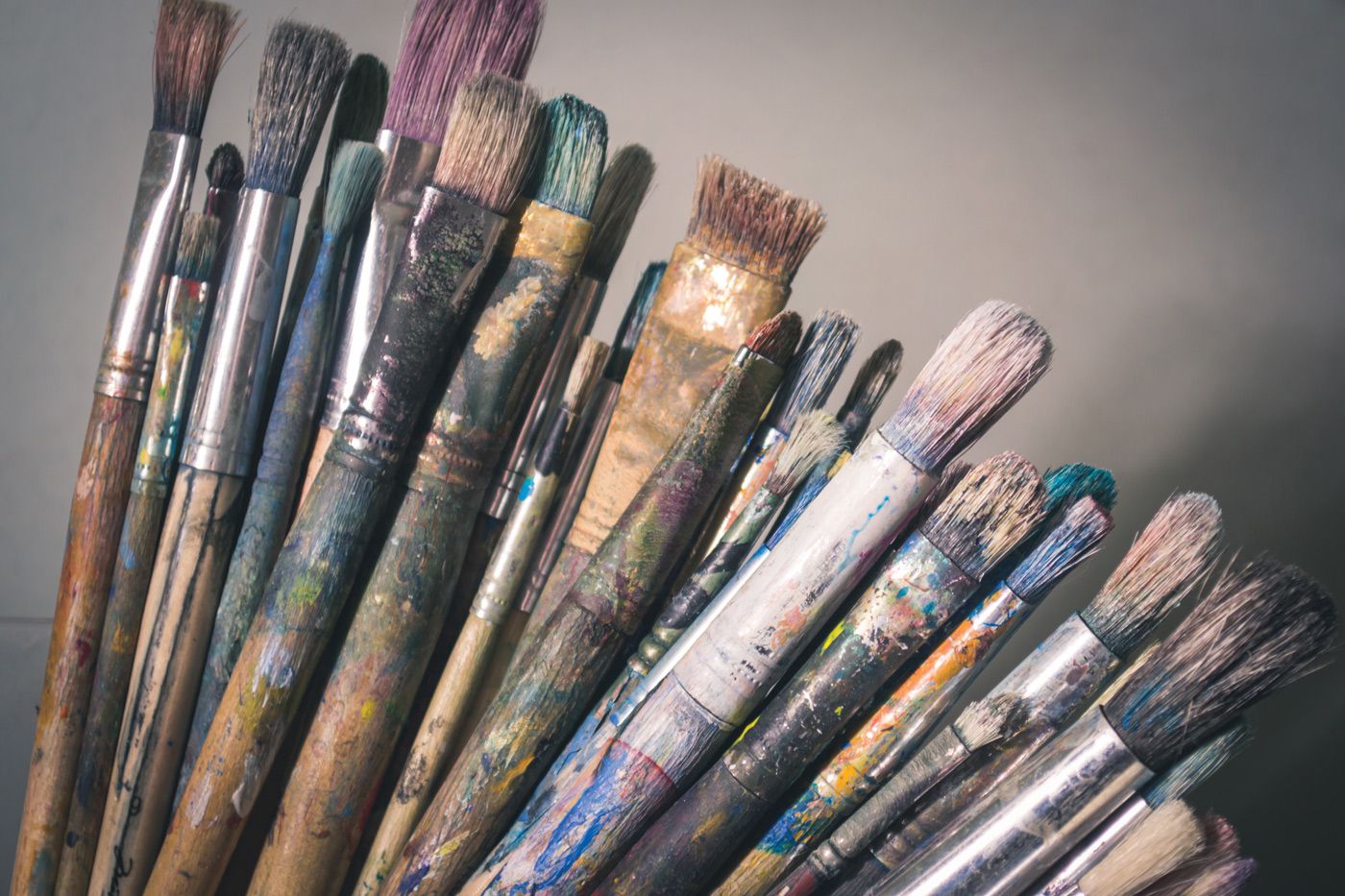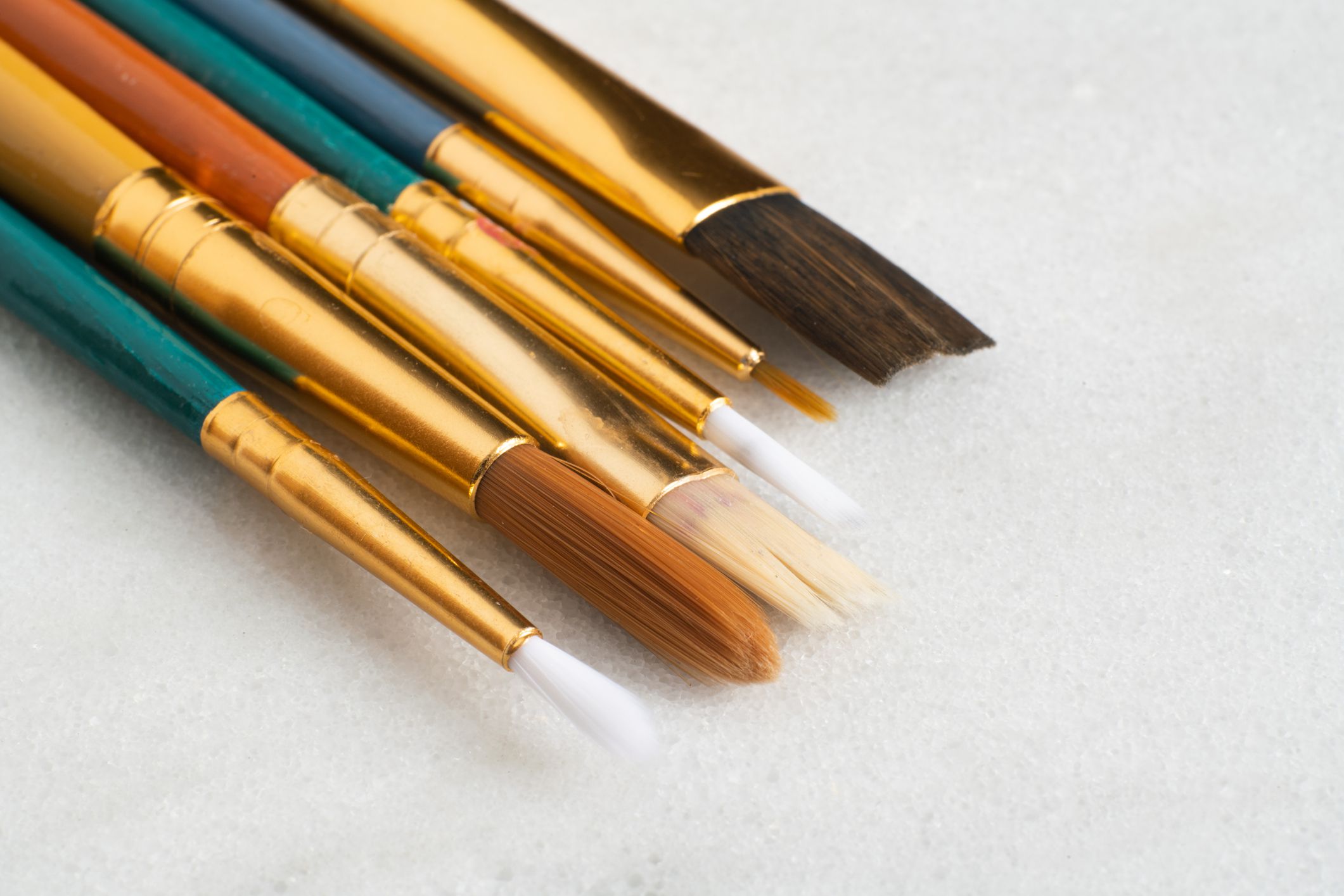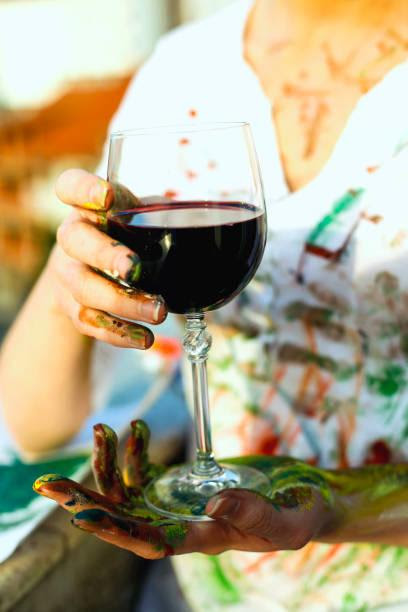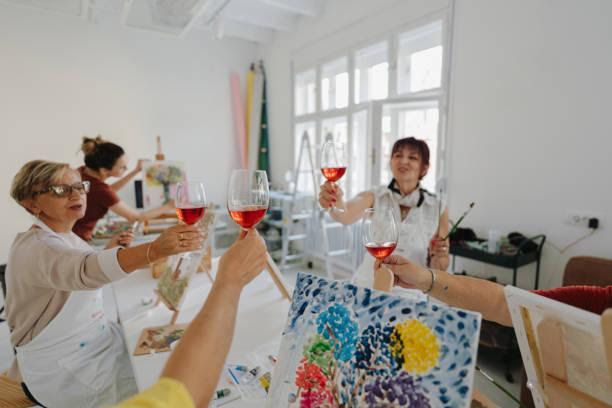Taking care of your paint brush is critical for a variety of reasons.
From an artist’s perspective, destroyed brushes just do not work. Their effectiveness as working instruments might be severely compromised if they are not cleaned and stored correctly.
Bent bristles, dried paint, and a loose ferrule are all annoyances that may be avoided by investing a few precious seconds at the conclusion of each painting session thoroughly cleaning and storing brushes properly.

Always lay them flat to dry to prevent water from penetrating the ferrule and loosening it or developing mold.
Reshape the bristles with your fingertips and ensure that they have adequate room to rest without touching or being pushed into weird shapes.
Brushes are a significant financial investment, and unless you want to pay the price in your pocketbook, you really need to safeguard your investment by properly caring for your paint brush.
How to Clean Acrylic Paint Brushes
1. Rinse or wipe away any extra wet paint from the paint brush using a cloth or other absorbent material.
2. Using warm running water, massage the bristles to remove any remaining paint. If the paint has already begun to dry, use a firm paint brush to loosen and remove any built-up paint.
3. Rinse with soapy water. In warm, not hot, soapy water, fully massage the paint brush and gently knead the bristles. I prefer to “brush” circles on my palm, ensuring that the soapy water enters the bristles.
4. Rinse thoroughly and pat dry. Rinse and then shake the bristles to remove any residual water. Store the paint brush flat, taking care not to bend the bristles. The storage location should be cold and dry, free of any heat sources.
Sets of Paint Brushes
Brushes may be rather costly. You may save money by purchasing a paint brush set.
Paint brush sets come in a variety of sizes and forms. While many sets are of poorer quality, they may be an excellent option for beginning painters, as they enable you to familiarize yourself with the many kinds and sizes of brushes without spending a lot of money.
Once you’ve determined whatever paint brush type you like, you may increase your brush collection and invest in higher-quality, more costly brushes.

I still like utilizing paint brush sets after many years of painting, particularly when working with acrylics. My most recent purchase was the D’Artisan Shoppe set, which I’m very pleased with.
How to Select the Appropriate Paint Brush
It’s easy to feel overwhelmed by the sheer variety of paint brush selections available. Simply strolling down the paint brush aisle at your local art supply shop might be scary. Many manufacturers have begun identifying the display’s divisions to make selection a bit simpler. However, with so many options, how do you know you’re selecting the correct paint brush for the correct application and media?
Hopefully, we can put some of this to rest here. You’ll discover that, like many other aspects of art, it’s not an exact science.
Numerous factors distinguish paint brushes. These include the following:
- Hair or bristle kind
- Bristle shape
- Bristle width or thickness
Hairs/Bristles for Paint Brushes
Perhaps the most critical consideration in selecting the appropriate paint brush for your application is the bristle type. Choosing the incorrect bristle type might result in unpleasant outcomes and make painting more tedious.
Consider some of the possible bristle hairs in further detail…
Sable – Sable brushes are silky and springy, named for the mink family member the Sable Marten. Sable brushes, which are mostly used in watercolor and oil painting, are capable of retaining a sharp tip for precise painting. Although the name implies that the hair fibers are derived from a “sable,” the hairs are most frequently derived from a weasel or mink.
Hog – Bristles made from a hog’s hair are coarse and tough. These affordable brushes are used with paints with a thicker consistency, such as oils or acrylics. Brush strokes are well defined when this kind of paint brush is employed since it is capable of retaining a big amount of paint.
Squirrel – A soft alternative to sable, squirrel brushes lack spring, making them somewhat more difficult to manage. Squirrel brushes, despite their lack of spring, are capable of creating a fine tip. Squirrel hairs are obtained from the tails of Gray and Brown Squirrels. Squirrel brushes work well with water-based or ink-based paints.
Ox – Made from the hair of cattle or oxen, ox hair brushes are bouncy but lack a fine point. These brushes are suitable for use with a number of different painting mediums.
Goat – Typically used in watercolor painting, goat hair brushes lack spring but produce beautiful splashes of color.
Pony – These brushes are made with natural hair from adult horses (not ponies). The fibers are coarse and brittle. These brushes are often used with water-based paints including watercolor, tempera, and acrylics.
Synthetic – Synthetic brushes are made of nylon or polyester strands and give the most versatility. Synthetic brushes are suitable for use with almost any sort of painting media. If you’re unsure which paint brush type to buy, synthetic brushes may be the finest option.
Shapes of Paint Brushes

Different bristle shapes on paint brushes have an effect on the markings formed. Each paint brush form is suitable for usage with any media. When selecting a paint brush for a certain medium, it is essential to consider the hair type. Consider each bristle form in further detail. Play idea: Painting – Waituhi about more by Clicking here.
Flat
Bristles on flat brushes are long and rectangular in shape. They have a flat “toe” and may create flat strokes. Additionally, they may be used to define edges and control lines.
Bright
As with flat brushes, bright bristles have a flat “toe.” The distinction is in the bristle length. Bright brushes are shorter and resemble a square rather than a rectangle.
Final thoughts
As we said earlier, bent bristles, dried paint, and a loose ferrule are all annoyances that may be avoided by investing a few precious seconds at the conclusion of each painting session thoroughly cleaning and storing your paint brush properly. Read about Consider these factors when buying a paint brush.














